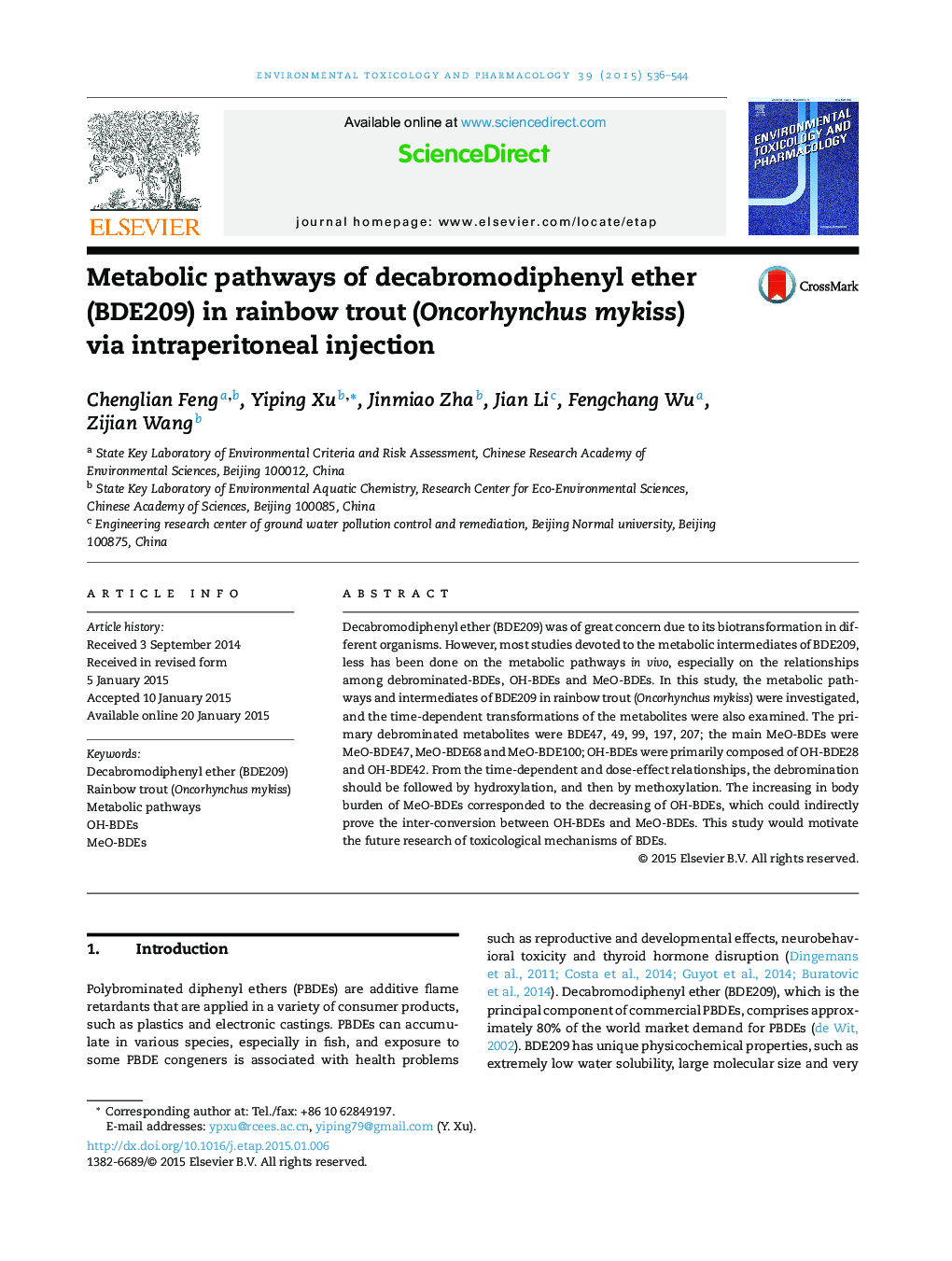| Article ID | Journal | Published Year | Pages | File Type |
|---|---|---|---|---|
| 5848792 | Environmental Toxicology and Pharmacology | 2015 | 9 Pages |
Abstract
Decabromodiphenyl ether (BDE209) was of great concern due to its biotransformation in different organisms. However, most studies devoted to the metabolic intermediates of BDE209, less has been done on the metabolic pathways in vivo, especially on the relationships among debrominated-BDEs, OH-BDEs and MeO-BDEs. In this study, the metabolic pathways and intermediates of BDE209 in rainbow trout (Oncorhynchus mykiss) were investigated, and the time-dependent transformations of the metabolites were also examined. The primary debrominated metabolites were BDE47, 49, 99, 197, 207; the main MeO-BDEs were MeO-BDE47, MeO-BDE68 and MeO-BDE100; OH-BDEs were primarily composed of OH-BDE28 and OH-BDE42. From the time-dependent and dose-effect relationships, the debromination should be followed by hydroxylation, and then by methoxylation. The increasing in body burden of MeO-BDEs corresponded to the decreasing of OH-BDEs, which could indirectly prove the inter-conversion between OH-BDEs and MeO-BDEs. This study would motivate the future research of toxicological mechanisms of BDEs.
Related Topics
Life Sciences
Environmental Science
Health, Toxicology and Mutagenesis
Authors
Chenglian Feng, Yiping Xu, Jinmiao Zha, Jian Li, Fengchang Wu, Zijian Wang,
